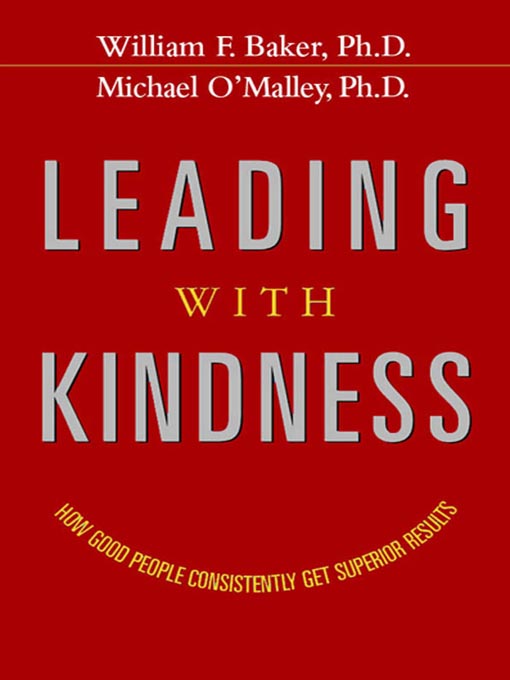Leading with Kindness
How Good People Consistently Get Superior Results
-
Creators
-
Publisher
-
Release date
January 20, 2009 -
Formats
-
OverDrive Read
- ISBN: 9780814401750
-
PDF ebook
- ISBN: 9780814401750
- File size: 985 KB
-
-
Languages
- English
-
Reviews
-
Publisher's Weekly
May 26, 2008
Say “boss” and many people think of Donald Trump throwing his weight around on The Apprentice
. But is that the most effective style of leadership? Not necessarily, argue Baker and O'Malley, who posit that successful leaders accomplish more with kindness and empathy than with aggression. According to the authors, true kindness is not to be confused with weakness, indulgence or mere likability; being genuinely kind means clearly communicating expectations and goals, pushing colleagues to improve and excel and encouraging them to try out things they are uncertain they will like. The book details the hallmarks of successful and kind leaders: compassion, integrity, gratitude, authenticity, humility, honor and the importance of maintaining credibility with one's employees and clients. While the authors' emphasis on honesty and mentorship is incontrovertibly well-intentioned, the paucity of practical advice and the dry presentation are more suited to an academic article, rather than an entire book. Readers looking for a helpful guide will be inspired but ultimately disappointed. -
Library Journal
July 15, 2008
Both ostensibly about leadership, these titles differ in tone and focus. Baker (CEO, Educational Broadcasting Corporation) and O'Malley (senior business editor, Yale Univ. Press) emphasize developing a "constellation of behaviors" that could best be described as kindness, while "The PITA Principle" offers an extended metaphor comparing Pain In The Ass (PITA) employees to actual sandwiches (the soggy, the crusty, etc.) and lists methods for working with such challenging subordinates and colleagues. Baker and O'Malley deny that being kind means a good manager must be a pushover, suggesting instead that offering clear expectations, telling the truth, fostering growth, and mentoring future leaders are not only good for the people involved but also good for business. Their book is the more scholarly of the two, with each chapter systematically offering bullet-point suggestions, insights gained from personal interviews with successful leaders, and helpful references. It starts slowly but is ultimately a credible guide for emphasizing the qualities of gratitude, authenticity, humility, and humor."The PITA Principle" is a much lighter read. Each chapter offers a definition of a different type of PITA, a list of their pop culture counterparts, and a discussion of each type's strengths and weaknesses. Orndorff and Clark, both associated with the Career Services Center, Pennsylvania State University, also suggest that PITA could stand for Professionals Increasing Their Awareness; to that end, they conclude with self-tests for determining personal PITA tendencies, as well as a final chapter outlining how to establish positive working relationships. Public libraries with large business collections might consider either book to round out their management collections; academic and special libraries may find more of lasting value in "Leading with Kindness".Sarah Statz Cords, Madison P.L., WI
Copyright 2008 Library Journal, LLC Used with permission.
-
Loading
Why is availability limited?
×Availability can change throughout the month based on the library's budget. You can still place a hold on the title, and your hold will be automatically filled as soon as the title is available again.
The Kindle Book format for this title is not supported on:
×Read-along ebook
×The OverDrive Read format of this ebook has professional narration that plays while you read in your browser. Learn more here.


